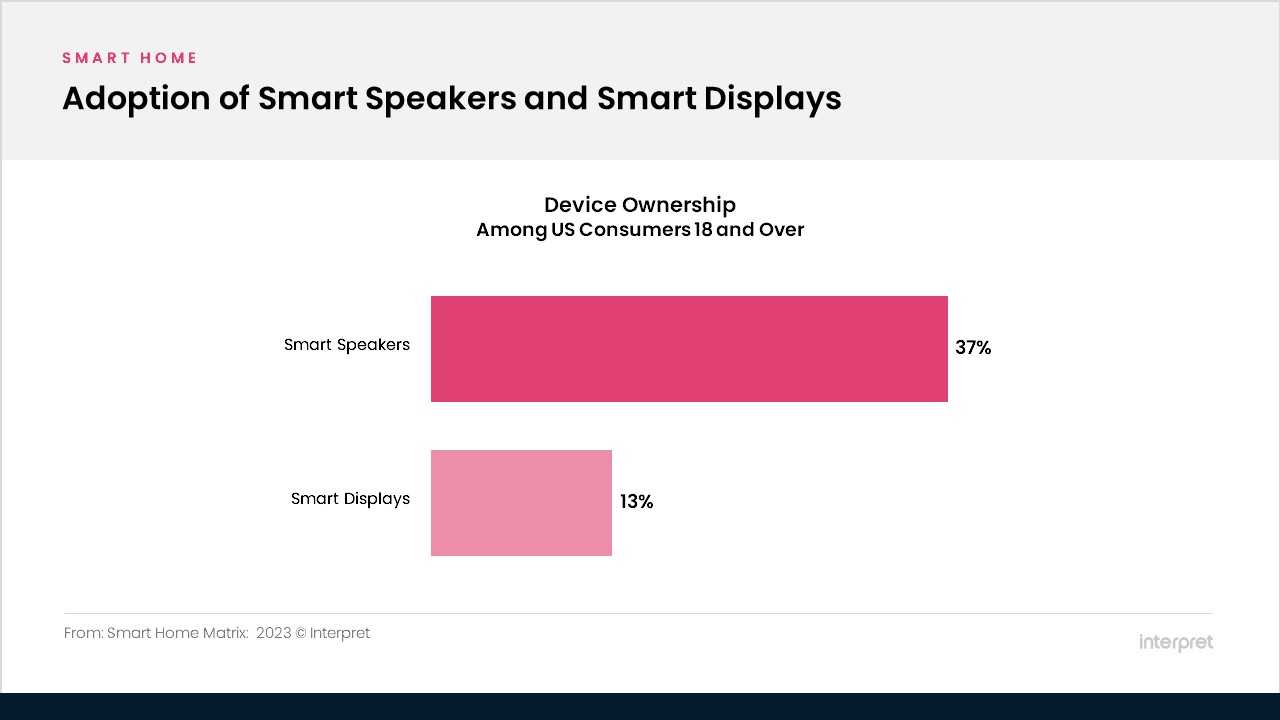Most of the talk following Apple’s WWDC announcements has, justifiably, been around the Vision Pro, Apple’s entry into the AR/VR space. A less celebrated announcement, however, is that of new capabilities for Apple TV that will extend the FaceTime experience to the big screen in one’s living room, den, or bedroom. TVs are bigger, better, and sharper than ever before, begging to play a larger role in the home – but can Apple redefine the TV into a home video conferencing experience?
Meta quietly shelved the Facebook Portal over a year ago, as consumers did not flock to the new device as the preferred way to video chat with grandmother. Interpret’s quarterly Smart Home Matrix survey of 10,000 US consumers indicates that 13% of US consumers own a smart display – a respectable adoption rate well ahead of more established smart products such as door locks and smart sprinkler controllers, but far below Wi-Fi security cameras and smart doorbells. Smart displays have surpassed 10% penetration as they play many roles, from entertainment controllers to smart home system controllers, to quick access of internet-based weather, recipes, and trivia.
Predicting consumer behavior can be difficult. As Apple expands Apple TV’s reach, will calls with loved ones move to the TV? With FaceTime’s familiarity among iPhone and iPad loyalists, will it translate to the big screen? The absence of a camera on the television or on the Apple TV puck means that the video calling experience will still involve an Apple mobile device but will allow for a very large view of the other party. While some consumers will likely love the idea of a larger view of family and friends, others may consider the whole thing superfluous if the iPhone is still needed to receive and make FaceTime calls.
Consumer technology companies have, for several years, been struggling to make the TV more than an entertainment interface and part of the home automation experience. Google’s Nest Hello Doorbell integrated with DISH Hopper to enable viewers to see who is at the front door, but that collaboration was launched just as consumers dumped their pay TV services en masse. Streaming media star Roku also recently partnered with Wyse Labs, purveyors of value-priced smart home devices, to launch a TV-centric smart home platform.
It makes sense that the TV – in addition to and not instead of mobile apps – is a good device for viewing camera feeds, configuring smart devices, and conducting video calls, but will consumers find adequate value such that these features become differentiators? Stay tuned.





